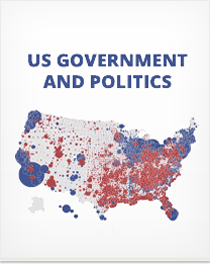Public Policy
This section covers the following topics
- Models of Decision Making
- Economic Policy
- Social Welfare and Entitlements
- Environmental Policy
- Education Policy
- Foreign Policy
Section Summary
There are different models of decision making that describe people’s approach to political thinking, including the rational, elite, and pluralist models. The government sets economic policy through Congress, as well as through the Federal Reserve. Social welfare programs have evolved under the federal government to be more efficient. Entitlement programs, on the other hand, have had little reform, and the government does not have as much control over spending on entitlement programs. The federal government has increased its involvement with education policy and environmental policy. Foreign and defense policy constitute a large share of the federal government’s work, with the executive and legislative branches working together to establish a foreign policy.
Models of Decision Making
Rational Model
The rational model of decision-making says that policymakers evaluate all options and weigh the pros and cons when making decisions. They look at all possible outcomes and select the one with the maximum benefits for all.
While the rational model makes sense, policymakers rarely have the information and time necessary to make a fully rational decision.
Elite Model
In the elite model of decision-making, a small group of influential people makes the decisions. This group will have the same goals and opinions with regard to policies, which makes it easier for them to execute their policies.
Pluralist Model
In the pluralist model, there are several groups with different interests that work together and compromise to make decisions.
Economic Policy
Types of economic policy
One of the biggest challenges for the federal government is managing the economy. In presidential elections,... Sign up to continue reading Public Policy >
